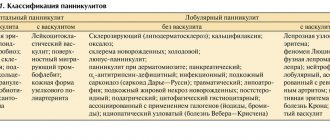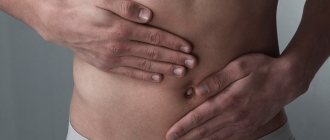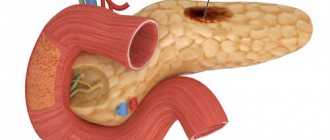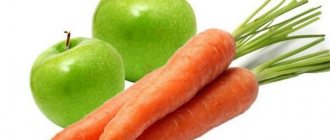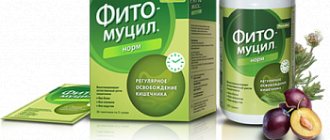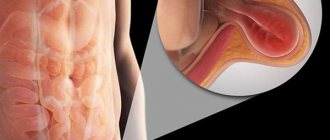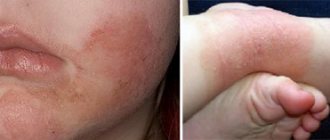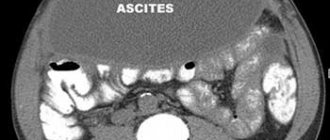General information
Mesadenitis is an inflammatory disease of the lymph nodes of the peritoneum of the small intestine.
The ICD-10 code for mesadenitis is I88 (Nonspecific lymphadenitis). In humans, there are approximately 600 lymph nodes in the abdominal cavity, which provide the body's protective function and prevent infection attacks. According to medical statistics, among acute surgical pathologies, the prevalence of mesadenitis is about 12%. As a rule, mesenteric lymphadenitis is diagnosed in children, as well as in patients at a young age (up to 25 years). Female representatives suffer from this disease slightly more often than males. Experts note the seasonality of the disease: the number of those who consult doctors with this pathology increases in the autumn and winter periods, when ARVI is widespread.
The disease is characterized by intense abdominal pain, which can be localized in different places, as well as other characteristic symptoms.
Medicines
Photo: prostatit.guru
Antibacterial drugs are a mandatory component of the treatment of mesadenitis, as they are aimed at eliminating the cause of the disease. Broad-spectrum antibiotics are prescribed (3rd generation cephalosporins (cefotaxime, ceftriaxone, cefixime), 2nd generation fluoroquinolones (ciprofloxacin, ofloxacin)).
From the group of antispasmodics, preference is given to drugs such as drotaverine and papaverine. Their action is aimed at relieving spasm and, as a result, eliminating pain. Painkillers include analgin and ketorolac (for more intense pain).
It should be remembered that the doctor selects medications. Taking medications without a doctor’s recommendations is strictly prohibited, since each drug is selected individually, taking into account the characteristics of the course of the disease and the presence of concomitant pathologies.
Pathogenesis
With mesadenitis, an inflammatory process occurs in the lymph nodes, which are located in the fold of the peritoneum. The abdominal cavity contains the small intestine, the longest section of the intestine. The entire surface of the small intestine is covered by a membrane, which on one side is attached to the posterior wall of the intestine by a fold. There are a lot of lymph nodes and vessels in this fold, thanks to which the intestines function normally.
Numerous lymph nodes prevent harmful bacteria from passing through the intestinal wall into the bloodstream. But if the infection gets directly into the mesenteric lymph nodes themselves, and microorganisms begin to multiply, the nodes become inflamed. In this regard, their direct function is disrupted, the lymph nodes do not filter harmful bacteria, and they enter the intestines without obstacles. This condition is called mesadenitis.
Mesenteric lymphadenitis can be provoked by viruses ( cytomegalovirus , Epstein-Barr virus , adenovirus, enterovirus) and bacteria (staphylococci, salmonella, E. coli, streptococci, Mycobacterium tuberculosis ).
If there is a primary inflammatory focus in the body - in the upper respiratory tract, intestines - then pathological organisms enter the lymph nodes by lymphogenous , enterogenous or hematogenous routes. If predisposing factors exist, the number of pathogenic organisms increases. The mesentery swells and hyperemia is noted. The lymph nodes become red and soft.
In the case of suppuration of the lymph nodes, an infiltrate appears with purulent melting and the presence of areas of necrosis. During the infectious-inflammatory process, the adipose tissue of the mesentery is affected. If a histological examination is performed, leukocyte infiltration and lymphoid hyperplasia of the lymph nodes, thickening and swelling of the capsule are determined. As a result, a serous or serous-purulent effusion appears in the abdominal cavity (this depends on the severity of the disease).
This disease is more often diagnosed in children than in adults. This is due to the fact that a child’s body cannot cope with infection as effectively as an adult’s body. In this case, the imperfection of the immune and digestive systems plays a role, which leads to frequent food poisoning and colds.
Localization of the disease
A little anatomy
The mesentery is a thin fold, which is a double sheet of peritoneum, which connects all the intestinal loops and ensures their reliable attachment to the posterior wall of the abdominal cavity. Inside the fold there are blood and lymphatic vessels and nerve fibers.
Its numerous mesenteric (mesenteric) lymph nodes perform various functions: they form immunity, eliminate pathological particles and cancer cells, and the growth and differentiation of some blood cells occurs in them. The total number of mesenteric lymph nodes varies from 400 to 600, and when inflammation occurs in the abdominal cavity, they are the first to respond to pathology.
Classification
Mesenteric lymphadenitis, depending on its course, is divided into acute and chronic.
- Acute mesadenitis is characterized by sudden development and pronounced symptoms.
- The chronic form of the disease occurs with less severe symptoms and develops over a long period of time.
The disease is also classified depending on the type of pathogen:
- Nonspecific - it manifests itself if viruses or bacteria migrate from the source of the main infection. In turn, it is divided into simple and purulent.
- Specific - develops due to the influence of Koch's bacillus or Yersinia bacteria.
Causes
The cause of the development of this disease is the primary foci of inflammation in the intestines, appendix, bronchi and other organs.
Mesenteric lymphadenitis can form under the influence of such pathogens:
- Viruses – the disease can develop against the background of infections of the genitourinary system, respiratory system, and digestive system. Most often, mesenteric lymphadenitis develops against the background of pharyngitis , adenoviral tonsillitis, cystitis , conjunctivitis , enteroviruses, and infectious mononucleosis provoked by the Epstein-Barr virus.
- Bacteria - both pathological bacteria and opportunistic bacteria can provoke mesadenitis - streptococci, E. coli, staphylococci, which normally inhabit the mucous membrane of the nasopharynx and gastrointestinal mucosa. The lymph nodes of the mesentery can become inflamed with campylobacteriosis, salmonellosis, yersiniosis , tuberculosis and other diseases caused by bacteria.
The risk of this disease increases if there are predisposing factors to its development. This is a deterioration in the functions of the immune system, damage to the gastrointestinal tract due to inflammatory processes.
Symptoms of mesadenitis
The disease develops suddenly, so the symptoms of mesadenitis in children and adults develop very sharply. Initially, children and adult patients experience prolonged pain similar to contractions. They develop either in the upper abdomen or in the navel area. Sometimes patients, especially children, are unable to determine the area of pain. Severe pain after some time is replaced by moderate dull pain, which becomes stronger if the person suddenly changes position or coughs. In addition, the following symptoms of mesadenitis develop in adults and children:
- fever;
- tachycardia - heart rate increases to 110-120 beats per minute;
- dyspeptic disorders - dry mouth, nausea, diarrhea, vomiting;
- sometimes there is a cough, runny nose, herpetic rash on the lips and wings of the nose, hyperemia of the pharynx;
- with the development of purulent inflammation, pain decreases, signs of intoxication , and the general condition of the body becomes worse;
- if a chronic disease develops in an adult or child, the symptoms disappear; the pain in this case is short-term, not too intense and intensifies with physical activity; From time to time, short-term nausea, diarrhea or constipation .
With tuberculous mesenteric lymphadenitis, symptoms increase gradually. Weakness and apathy appear, the skin becomes pale and earthy. The temperature rises to low-grade levels. The pain is aching, without clear localization, short-lived.
School age children (from 6 to 18 years old)
At this age, children can already describe their feelings in detail. In this age group, it is important to pay attention to the psycho-emotional status of the child. If a child has recently experienced major emotional events or experienced stress, then it is worth thinking about and not ruling out a similar cause for the child’s well-being as an element of psychosomatics. It is necessary to find out the duration, localization and nature of the pain, the connection with food intake, and the nature of the stool. In girls of puberty, the cause of abdominal pain can often be acute gynecological pathology, such as uterine blood reflux, apoplexy, ovarian torsion, etc., requiring immediate surgical intervention.
Tests and diagnostics
In the process of diagnosing this disease, difficulties may occur due to the nonspecific clinical picture. Therefore, diagnostic studies are recommended to be carried out comprehensively and in full. The following scheme for diagnosing the disease is practiced:
- Examination by a surgeon - the doctor conducts a palpation examination of the abdomen, in case of illness, determining the presence of dense tuberous formations localized in different places. The doctor also records a number of positive specific symptoms: Klein (if the patient turns from a supine position to the left side, the pain migrates from right to left), McFadden (pain along the outer edge of the rectus abdominis muscle), Sternberg (pain appears if you press along the line, which connects the left hypochondrium with the right iliac region).
- Ultrasound examination of the abdominal cavity - during this study, enlarged dense lymph nodes and increased echogenicity in the mesentery are determined. In addition, other organs are examined - the gallbladder, spleen, pancreas, in order to exclude other diseases with similar symptoms ( cholecystitis , acute pancreatitis
- MRI of the abdominal cavity - currently this study is the most informative. It makes it possible to find out exactly where the affected lymph nodes are located, determine their number and size.
- Laboratory tests - conduct a general blood test, which allows you to determine leukocytosis and an increase in ESR. If we are talking about a bacterial infection, then the leukocyte formula shifts to the left, and neutrophilia is noted. With a viral infection, lymphocytosis . Blood cultures are also performed for sterility to determine the pathogen that circulates in the blood. If there is a suspicion of tuberculosis, a Mantoux test and intradermal diaskintest are performed. of antibodies to it , special serological methods of blood testing are used.
- Diagnostic laparoscopy - this method is used if non-invasive methods do not provide sufficient information. Using this study, you can visualize the lymph nodes that have been affected, determine exactly where they are located, and find out their number. Also during the study, other abdominal organs are examined to exclude concomitant pathologies and carry out differential diagnosis. To definitively establish the diagnosis, a sample of the lymph node is collected for histological examination.
- Computed tomography of the abdominal organs - the number of enlarged lymph nodes in the root of the mesentery of the small intestine is determined.
Differential diagnosis of mesadenitis with the following diseases is carried out:
- pancreatitis;
- acute appendicitis ;
- cholecystitis;
- intestinal and renal colic;
- colitis;
- exacerbation of ulcers;
- adnexitis;
- ovarian apoplexy.
Also, similar symptoms can be observed with neoplasms, syphilis , lymphogranulomatosis , etc.
Treatment with folk remedies
It is important to understand that treatment of mesenteric lymphadenitis with folk remedies can only be carried out as an auxiliary method. It will not be possible to cope with the disease at home using traditional methods. But if the doctor approves the practice of such methods, they can be used in the process of primary treatment.
For mesadenitis, it is practiced to take decoctions and infusions of herbs:
- A decoction of blackberry root has a bactericidal, anti-inflammatory, and tonic effect. To prepare the decoction, take 15 g of dry ground root per 250 g of water and boil for 5 minutes. You should drink it 3 times a day, a third of a glass.
- A decoction or infusion of chamomile and calendula helps reduce pain and relieve signs of inflammation. To prepare the product you need to take 1 tbsp. l. chamomile and 1 tsp. calendula, pour 0.5 liters of boiling water and leave for one hour. You can also boil the product for several minutes. Drink half a glass three times a day.
- Cumin decoction will help normalize intestinal functions. If we are talking about treating children under 7 years of age, it is worth preparing a decoction from the seeds; an infusion is suitable for adults. The preparation proportions are as follows: 1 tbsp. l. seeds per 0.5 liters of water.
Fully or partially limited products
Should be excluded:
- fatty meat, fish, smoked meat and fish, goose and duck meat, salted fish, sausages, any types of canned food;
- animal fats and lard;
- rich broths;
- any fried foods (pies, pancakes, meat, fish, pancakes);
- fresh bread, pastries made from puff pastry, shortbread and butter dough, pastries and pies;
- legumes, radishes, turnips, radishes, white cabbage, garlic, onions, sorrel;
- eggs, hard-boiled and fried;
- all dairy products;
- hot seasonings, ketchup, mayonnaise;
- coffee, chocolate and cocoa.
Table of prohibited products
| Proteins, g | Fats, g | Carbohydrates, g | Calories, kcal | |
Vegetables and greens | ||||
| canned vegetables | 1,5 | 0,2 | 5,5 | 30 |
| swede | 1,2 | 0,1 | 7,7 | 37 |
| peas | 6,0 | 0,0 | 9,0 | 60 |
| bulb onions | 1,4 | 0,0 | 10,4 | 41 |
| chickpeas | 19,0 | 6,0 | 61,0 | 364 |
| radish | 1,2 | 0,1 | 3,4 | 19 |
| white radish | 1,4 | 0,0 | 4,1 | 21 |
| beans | 7,8 | 0,5 | 21,5 | 123 |
| horseradish | 3,2 | 0,4 | 10,5 | 56 |
| spinach | 2,9 | 0,3 | 2,0 | 22 |
| sorrel | 1,5 | 0,3 | 2,9 | 19 |
Berries | ||||
| grape | 0,6 | 0,2 | 16,8 | 65 |
Mushrooms | ||||
| mushrooms | 3,5 | 2,0 | 2,5 | 30 |
| marinated mushrooms | 2,2 | 0,4 | 0,0 | 20 |
Nuts and dried fruits | ||||
| nuts | 15,0 | 40,0 | 20,0 | 500 |
| almond | 18,6 | 57,7 | 16,2 | 645 |
Snacks | ||||
| potato chips | 5,5 | 30,0 | 53,0 | 520 |
Cereals and porridges | ||||
| corn grits | 8,3 | 1,2 | 75,0 | 337 |
| pearl barley | 9,3 | 1,1 | 73,7 | 320 |
Flour and pasta | ||||
| vareniki | 7,6 | 2,3 | 18,7 | 155 |
| dumplings | 11,9 | 12,4 | 29,0 | 275 |
Bakery products | ||||
| buns | 7,9 | 9,4 | 55,5 | 339 |
| Rye bread | 6,6 | 1,2 | 34,2 | 165 |
Confectionery | ||||
| pastry cream | 0,2 | 26,0 | 16,5 | 300 |
| shortbread dough | 6,5 | 21,6 | 49,9 | 403 |
Ice cream | ||||
| ice cream | 3,7 | 6,9 | 22,1 | 189 |
Chocolate | ||||
| chocolate | 5,4 | 35,3 | 56,5 | 544 |
Raw materials and seasonings | ||||
| mustard | 5,7 | 6,4 | 22,0 | 162 |
| mayonnaise | 2,4 | 67,0 | 3,9 | 627 |
Dairy | ||||
| milk 4.5% | 3,1 | 4,5 | 4,7 | 72 |
| cream 35% (fat) | 2,5 | 35,0 | 3,0 | 337 |
| whipped cream | 3,2 | 22,2 | 12,5 | 257 |
Cheeses and cottage cheese | ||||
| parmesan cheese | 33,0 | 28,0 | 0,0 | 392 |
Meat products | ||||
| fatty pork | 11,4 | 49,3 | 0,0 | 489 |
| salo | 2,4 | 89,0 | 0,0 | 797 |
| bacon | 23,0 | 45,0 | 0,0 | 500 |
Sausages | ||||
| smoked sausage | 9,9 | 63,2 | 0,3 | 608 |
Bird | ||||
| smoked chicken | 27,5 | 8,2 | 0,0 | 184 |
| duck | 16,5 | 61,2 | 0,0 | 346 |
| smoked duck | 19,0 | 28,4 | 0,0 | 337 |
| goose | 16,1 | 33,3 | 0,0 | 364 |
Fish and seafood | ||||
| smoked fish | 26,8 | 9,9 | 0,0 | 196 |
| black caviar | 28,0 | 9,7 | 0,0 | 203 |
| salmon caviar granular | 32,0 | 15,0 | 0,0 | 263 |
| salmon | 19,8 | 6,3 | 0,0 | 142 |
| canned fish | 17,5 | 2,0 | 0,0 | 88 |
| salmon | 21,6 | 6,0 | — | 140 |
| trout | 19,2 | 2,1 | — | 97 |
Oils and fats | ||||
| animal fat | 0,0 | 99,7 | 0,0 | 897 |
| cooking fat | 0,0 | 99,7 | 0,0 | 897 |
Non-alcoholic drinks | ||||
| soda water | 0,0 | 0,0 | 0,0 | — |
| cola | 0,0 | 0,0 | 10,4 | 42 |
| instant coffee dry | 15,0 | 3,5 | 0,0 | 94 |
| sprite | 0,1 | 0,0 | 7,0 | 29 |
| * data is per 100 g of product | ||||
Mesadenitis in children
Most often, acute mesadenitis in children develops between the ages of 6 and 13 years. This is due to the anatomy and physiology of the child’s lymphatic system. In children, mesadenitis can be primary or secondary. The primary develops as an independent disease, the secondary manifests itself against the background of the reaction of the lymph nodes to infectious diseases.
In children, the disease manifests itself as pain in the abdomen, so parents should not rule out such a problem if the child complains of abdominal pain. This cause of pain is especially likely in children with chronic diseases of the respiratory system and kidneys. The disease can also develop against the background of incompletely cured rhinitis or tonsillitis .
Symptoms of the disease in children are the same as in adults. Features of treatment of the disease are also similar to the treatment of adult patients. However, as pediatrician Komarovsky talks about mesadenitis in a child, this disease most often does not require special treatment and goes away if the cause of its development is completely eliminated. But you should still consult a doctor.
Reviews and results
Reviews from parents indicate the need for proper nutrition in this disease. In mild cases, no treatment was prescribed, and dietary intake was recommended to relieve inflammation and pain. Sparing the digestive organs and adhering to the principle of fractional nutrition gave positive results. First of all, nausea and abdominal discomfort decreased, stool normalized, and bloating significantly decreased. In general, the food does not differ from the healthy diet that a child is accustomed to. The only difference was the exclusion of unhealthy foods containing simple carbohydrates.
- “... My son’s acute respiratory viral infections and tonsillitis are always complicated by this disease. The abdomen becomes hard, bloated, spasms and pain bother you, and it all ends with vomiting. Often all this happens against the background of high temperature. This condition may last for a day or two. After this, weakness and poor appetite bother me. The first time we consulted a surgeon, and he made this diagnosis. We were tested for the Epstein Bar virus (not detected) and treated with antibiotics. Now we already know what it is, and if it’s not severe, then we don’t go anywhere. They said that we need to strengthen our immune system and prevent colds. But it’s difficult, since I just started kindergarten. As for the diet, I prepare everything for him in accordance with his age and do not allow sausages, preservatives, smoked foods, a lot of sweets, fatty and fried foods”;
- “... My daughter suffered from ARVI, and after 10 days abdominal pain appeared, again the temperature lasted for 2 days, and she felt a little better. We contacted a surgeon, took tests, and sent him for an ultrasound, where they discovered mesodenitis. 4 mesenteric lymph nodes are enlarged. The condition is not serious and the tests are almost normal, so no treatment was prescribed. Indeed, everything went away without treatment, only the condition was corrected with nutrition to reduce pain and inflammation in the abdomen. They recommended a gentle diet (Diet No. 5) - nothing fatty or fried, spicy, sausage or smoked. Over the weekend I kept her on soups, boiled meat, porridge, cottage cheese, and then went to kindergarten - the food there is also dietary. It’s good that now an ultrasound can make this diagnosis, otherwise we would have gone for surgery with suspected appendicitis”;
- “... A year ago I fell ill with bronchitis, after which my stomach began to hurt. They did an ultrasound of the abdominal cavity - single lymph nodes up to 16 mm. We were treated with antibiotics and physical therapy. procedures, followed the diet for almost 4 months, and everything returned to normal. However, against the background of a cold, the stomach hurts again and the nodes increase. I’m very worried, but I won’t give antibiotics. We switched to restoratives and Imunoflazid. The food is organized as it should be: porridge with water and milk, cottage cheese and dishes made from it (it helps that he eats it well), boiled meat, I steam cutlets in the oven. Drinks a lot of juices, infusions of rose hips, sea buckthorn and viburnum. Eats fruits and berries in season. We hope that with age he will get stronger and everything will return to normal.”
Diet for mesadenitis
Diet 5th table
- Efficacy: therapeutic effect after 14 days
- Duration: from 3 months or more
- Cost of products: 1200 - 1350 rubles per week
Diet for mesadenitis in children
- Efficacy: therapeutic effect after 7 days
- Duration: from 3 months or more
- Cost of products: 1300-1400 rubles. in Week
When treating this disease, it is very important to adhere to a special diet. Proper nutrition for adults and children is one of the important principles of adequate treatment of the disease.
First of all, it is important to remove fried, smoked, salted foods, as well as baked goods, coffee, strong tea, and alcohol from the diet.
The menu should include the following products:
- lean meat and fish;
- porridge;
- vegetable soups;
- fruit drinks and compotes from dried fruits.
You need to eat small portions 5 times a day. As often as possible, you should eat foods prepared in crushed and pureed form.
It is important to completely stop smoking and drink plenty of fluids to toxins from the body.
Menu (Power Mode)
In any case, a child’s diet should be appropriate for his age and contain the required amount of protein, complex carbohydrates and vitamins. With this disease, food should be gentle and easily digestible. This includes protein from dairy products, fish and egg dishes. During treatment, the fat content is reduced by eliminating fatty foods and frying foods. Portions should be small - it is better to have snacks more often and not burden the provoked intestines.
| Breakfast |
|
| Lunch |
|
| Dinner |
|
| Afternoon snack |
|
| Dinner |
|
| For the night |
|
| Breakfast |
|
| Lunch |
|
| Dinner |
|
| Afternoon snack |
|
| Dinner |
|
| For the night |
|
| Breakfast |
|
| Lunch |
|
| Dinner |
|
| Afternoon snack |
|
| Dinner |
|
| For the night |
|
| Breakfast |
|
| Lunch |
|
| Dinner |
|
| Afternoon snack |
|
| Dinner |
|
| For the night |
|
Consequences and complications
If the disease progresses, suppuration of the lymph node, the appearance of an abscess and the development of purulent mesadenitis may occur. If purulent mesadenitis is not treated in a timely manner, the abscess will likely melt and break through into the peritoneum, which will lead to peritonitis.
With a long course of the disease, adhesive disease of the abdominal organs may develop, which becomes dangerous due to the risk of developing intestinal obstruction.
If microorganisms enter the bloodstream, sepsis , a very dangerous condition that can be fatal.
In some rare cases, generalization of the process is possible, which leads to extensive inflammation of the body's lymph nodes.
Tuberculous mesadenitis can be complicated by an abscess , peritonitis , sepsis , intestinal obstruction , and adhesive disease .
List of sources
- Berebitsky, S.S. Mesenteric lymphadenitis. Classification, treatment / S.S. Berebitsky // Second Zakharyin Readings: abstracts of reports of the scientific and practical conference. Penza, 1995. - pp. 75-76.
- Grushlavsky, G.L. Observation of nonspecific mesenteric lymphadenitis / G.L. Grushlavsky // Clinical medicine. 1970.- No. 12. - P. 113-114.
- Elufimova, V.F. A rare combination of tuberculosis of the mesenteric lymph nodes and the gastric mucosa in a child / V.F. Elufimova, L.E. Gedymin // Problems of tuberculosis. 1998. - No. 2. - P. 53-54.
- Rizakhanov, D.M., Diagnosis and treatment tactics for acute mesoadenitis in the clinic of intestinal infections: abstract. dis. Ph.D. honey. Sci. -M., 2003.-20 p.
